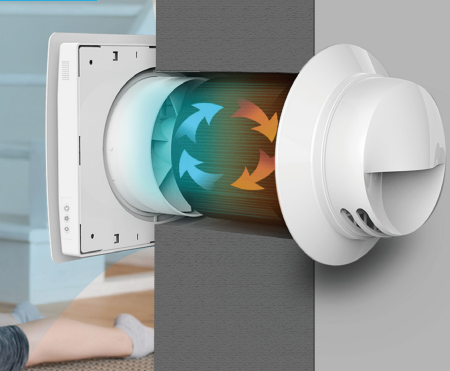Expert Tips to Maximize HRV Output
Discovering the Perks of Heat Recovery Ventilation for Power Effectiveness in Houses
Heat Recovery Ventilation (HRV) systems provide house owners a functional technique to improving energy efficiency. By reclaiming heat from outgoing air, these systems can considerably minimize cooling and heating costs. In addition, they provide a consistent supply of fresh air, boosting indoor air high quality and convenience degrees. As property owners think about lasting options, understanding the subtleties of HRV systems comes to be progressively essential. What factors should one evaluate prior to making such an investment?
Comprehending Heat Recovery Ventilation Systems

Exactly How HRV Enhances Indoor Air Quality

Energy Cost Savings: The Economic Benefits of HRV
Maximizing energy efficiency, heat recovery ventilation (HRV) systems provide significant monetary benefits for house owners. By recouping and reusing heat from exhaust air, HRVs substantially minimize heating & cooling prices. This innovation can this contact form cause power savings of approximately 30%, depending on environment and usage patterns. House owners typically discover lowered utility costs soon after setup, making HRVs an economically sensible investment over time. Furthermore, lots of regions give incentives or rebates for energy-efficient upgrades, even more enhancing the monetary charm. As energy prices continue to increase, the cost-effectiveness of HRVs comes to be progressively clear. In general, the unification of HRV systems not only advertises power efficiency but additionally contributes to lasting economic savings for houses.
The Environmental Impact of Heat Recovery Ventilation
A considerable ecological benefit of heat recovery ventilation (HRV) systems exists in their ability to minimize total power usage. By redeeming heat from exhaust air and moving it to inbound fresh air, HRV systems minimize the demand for energy-intensive heating and cooling down methods. This reduction in power need adds to reduce greenhouse gas emissions, as much less fossil gas is called for to keep comfortable indoor temperature levels. In addition, HRV systems boost indoor air quality by effectively trading stagnant air with fresh exterior air, decreasing dependence on mechanical air conditioning systems that can damage the setting. Overall, the application of HRV systems supports sustainable living practices and aligns with international initiatives to combat climate change by promoting power efficiency in domestic setups.
Selecting the Right HRV System for Your Home
How can house owners ensure they select the best heat recovery ventilation (HRV) system for their needs? They should evaluate their home's size and design, as these factors influence airflow requirements. Next, examining the system's effectiveness rankings read more is vital, as higher ratings show much better efficiency and energy financial savings. Home owners ought to likewise consider installment and maintenance expenses, comparing various brands and versions for value. Additionally, it is very important to examine sound levels, as some systems run more quietly than others. Consulting with HVAC specialists can provide tailored recommendations based on details home problems. Ultimately, analyzing user testimonials and guarantees can assist in making an informed decision, guaranteeing that the picked HRV system successfully enhances indoor air high quality and energy efficiency.
Frequently Asked Concerns

How Often Should I Tidy or Maintain My HRV System?
The regularity of cleansing or keeping a warm recovery air flow (HRV) system typically depends upon usage and ecological factors. Typically, it is a good idea to do maintenance every more 6 months to guarantee peak efficiency and air high quality.

Can HRV Equipments Assist Lower Humidity Degrees Inside?
HRV systems can successfully reduce indoor humidity levels by trading stagnant, moist air with fresh, drier air from outside. HRV Heat Recovery Ventilation. This procedure aids keep a well balanced indoor environment, improving comfort and avoiding moisture-related concerns
What Is the Life-span of a Common HRV System?
The life expectancy of a regular heat recovery ventilation (HRV) system varies, typically lasting between 10 to 15 years. Routine upkeep can prolong its efficiency and functional life, making sure peak performance throughout its usage duration.
Exist Any Kind Of Noise Worries With HRV Equipments?
Sound interest in HRV systems can occur, especially from follower operation. However, many modern units are developed to reduce audio degrees, ensuring they run silently while keeping performance, which addresses possible disruptions in living settings.
Can I Install an HRV System Myself, or Do I Need an Expert?
The private contemplated whether to install the heat recovery ventilation (HRV) system personally or work with a specialist. Usually, while do it yourself setup is possible, proficiency guarantees correct capability and compliance with local building regulations, enhancing system effectiveness.